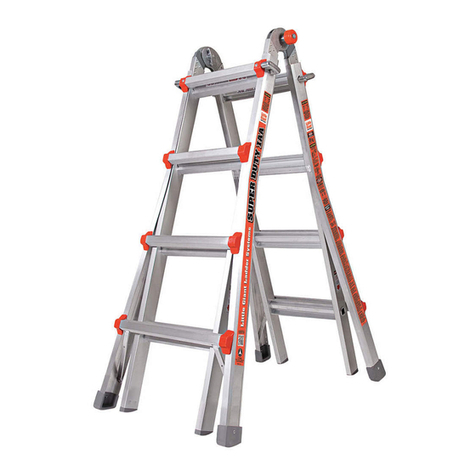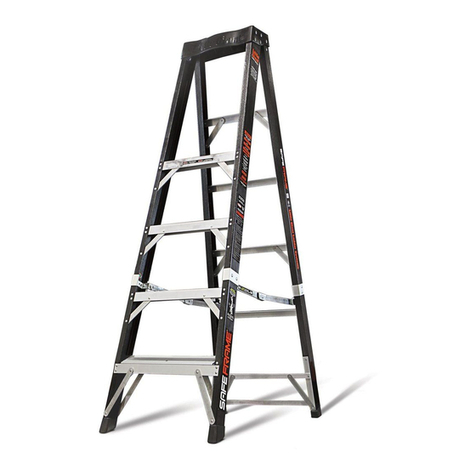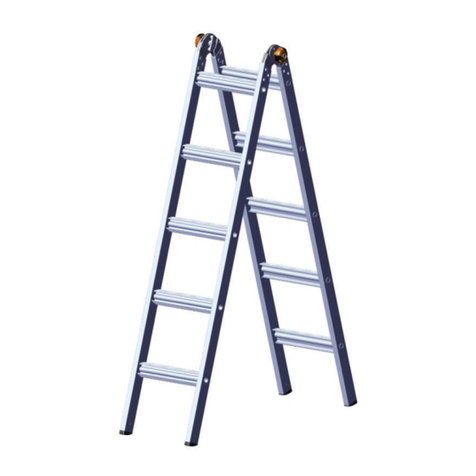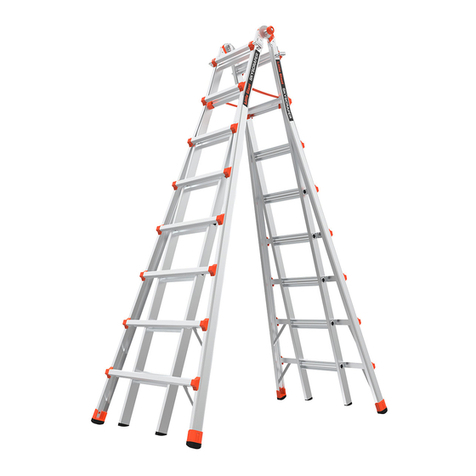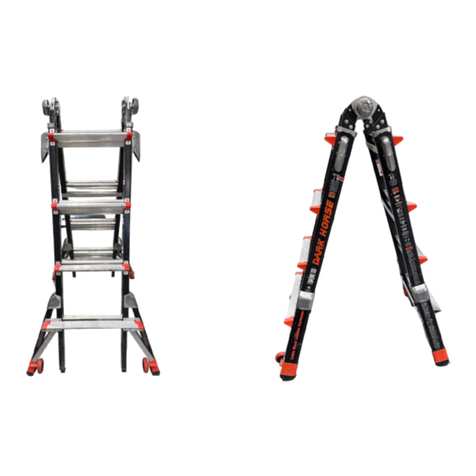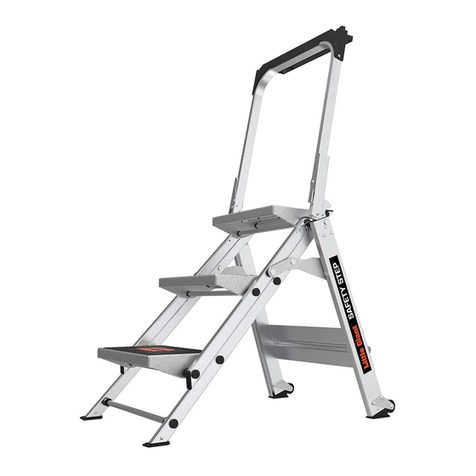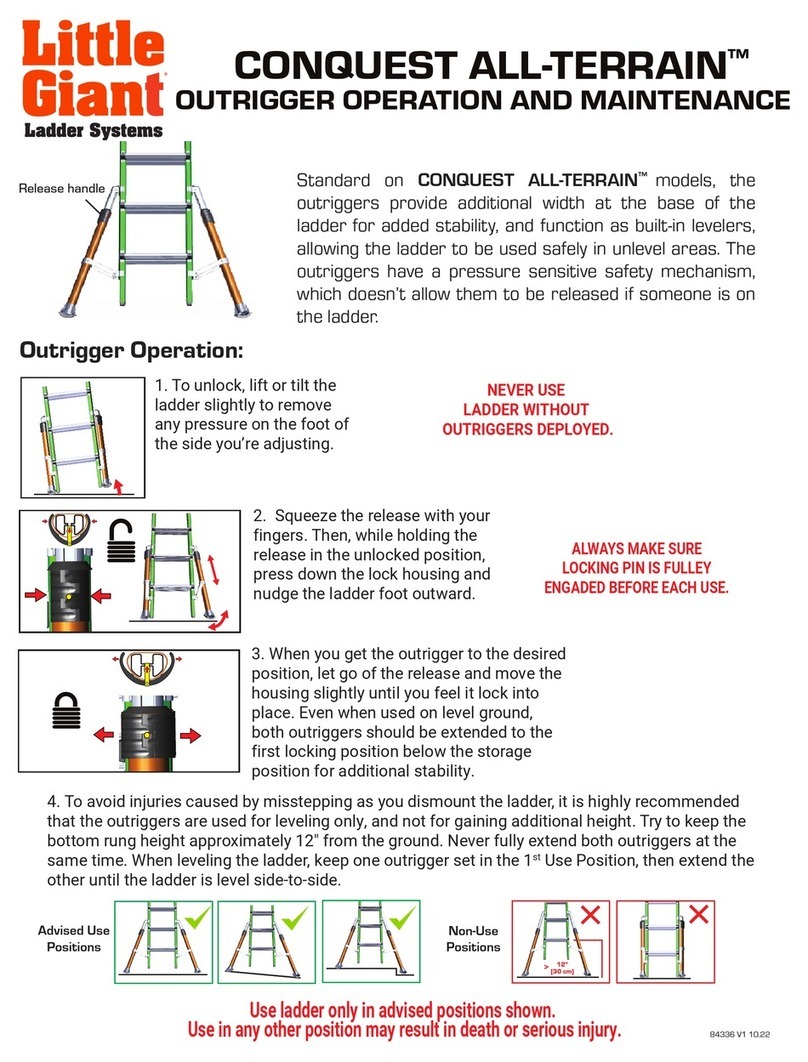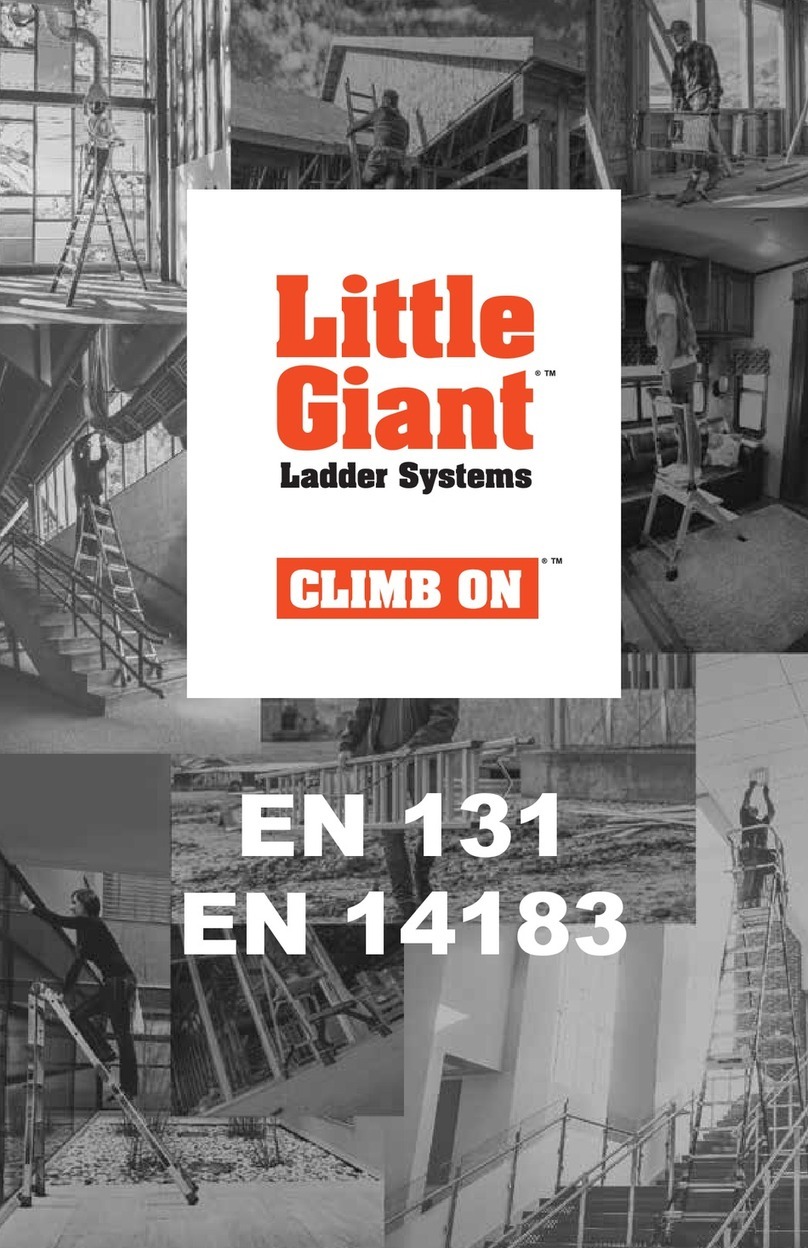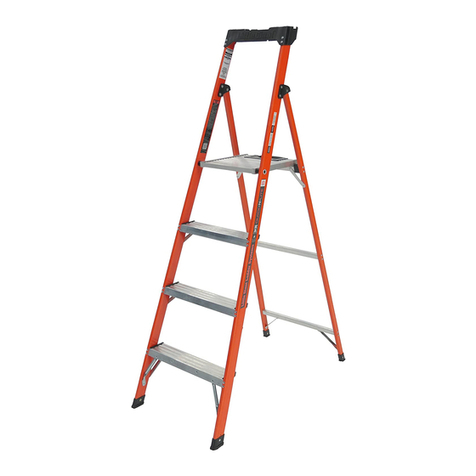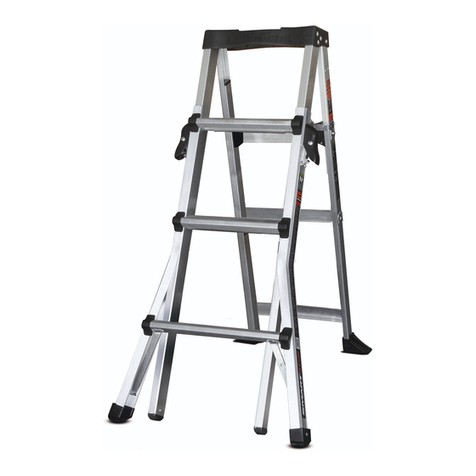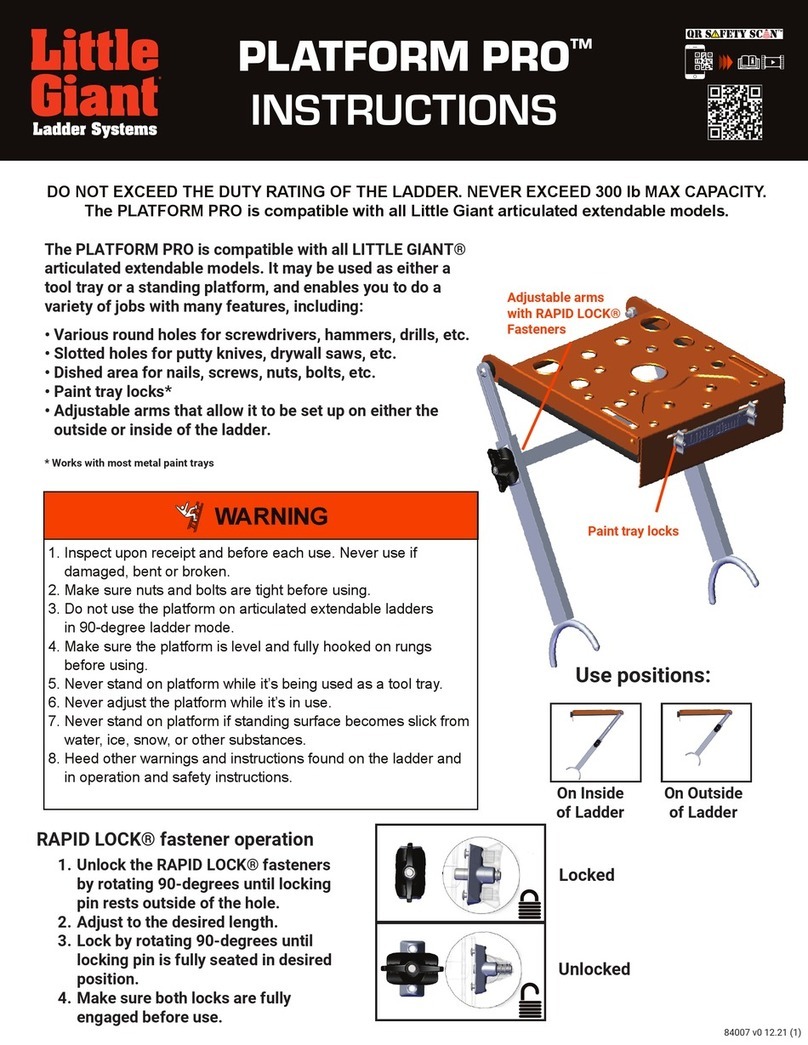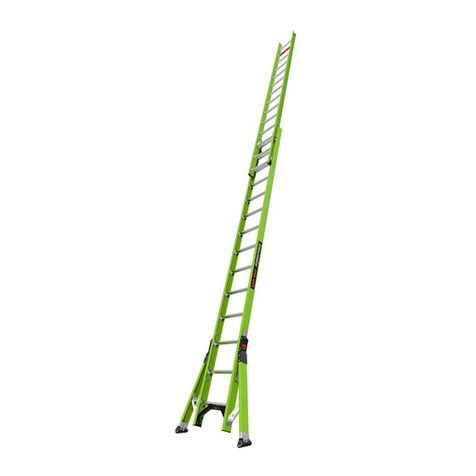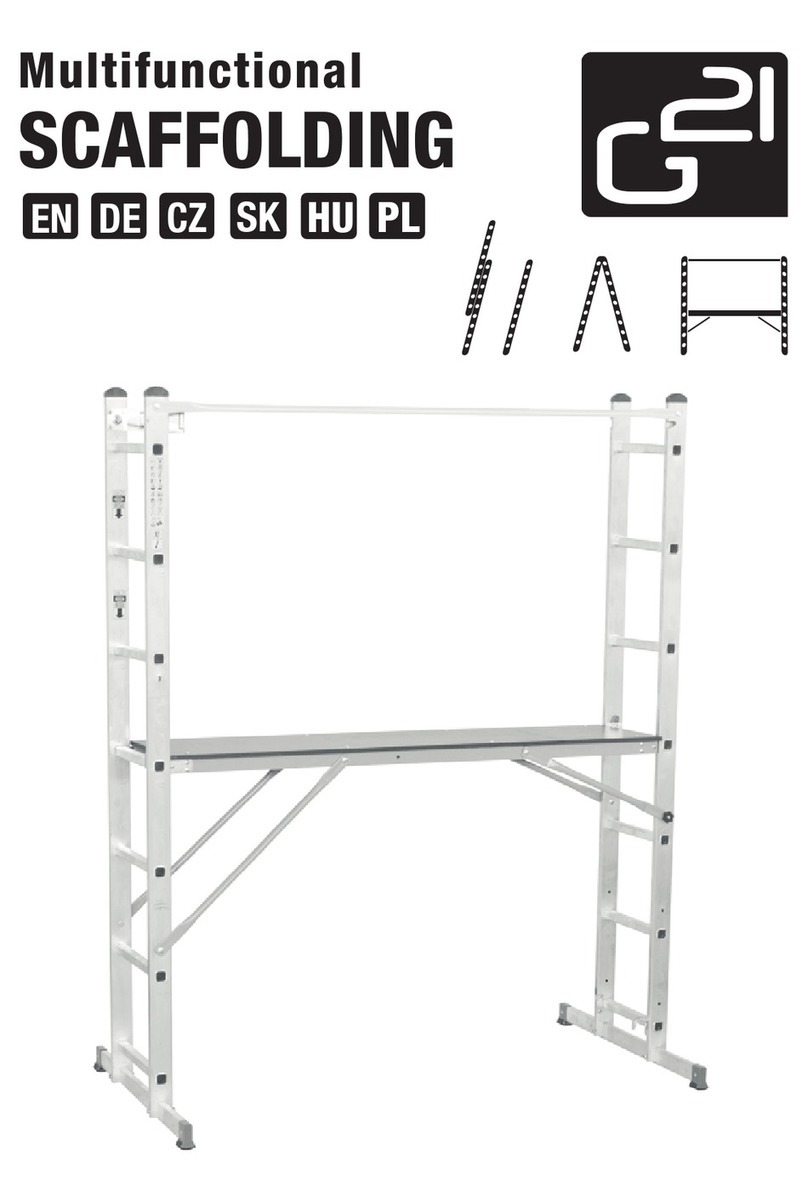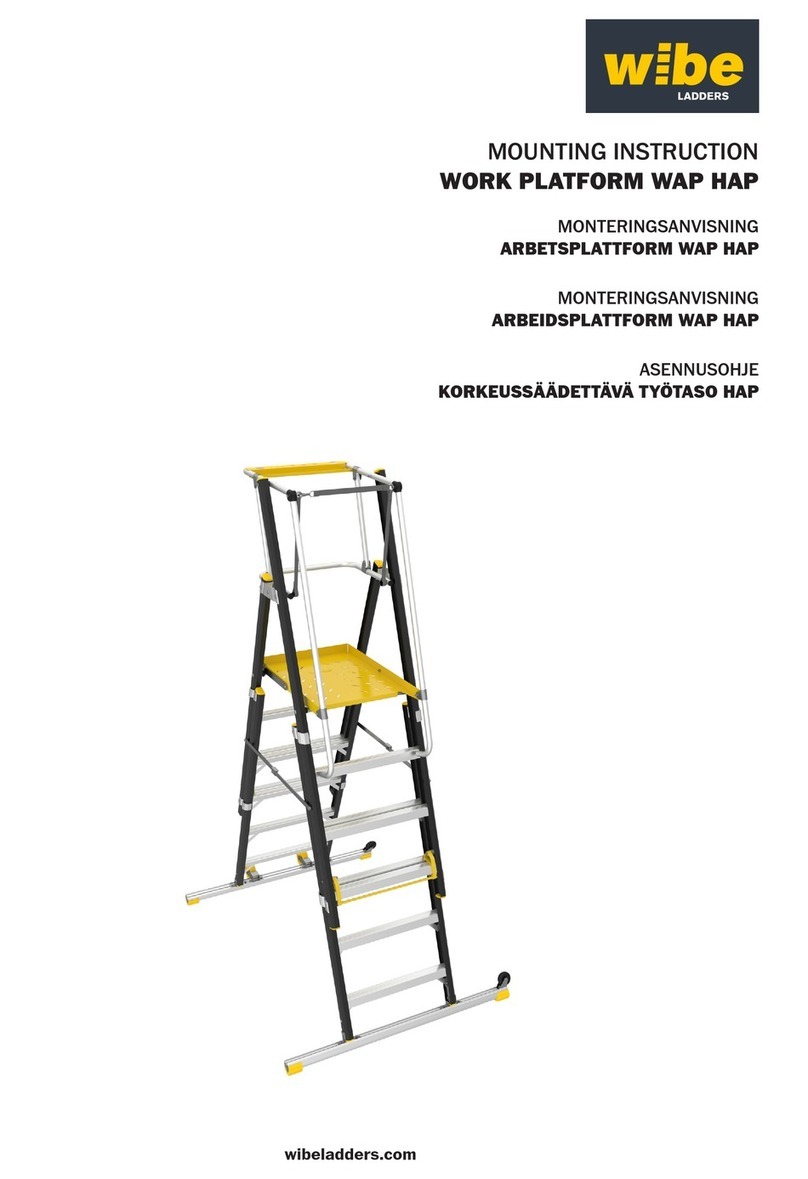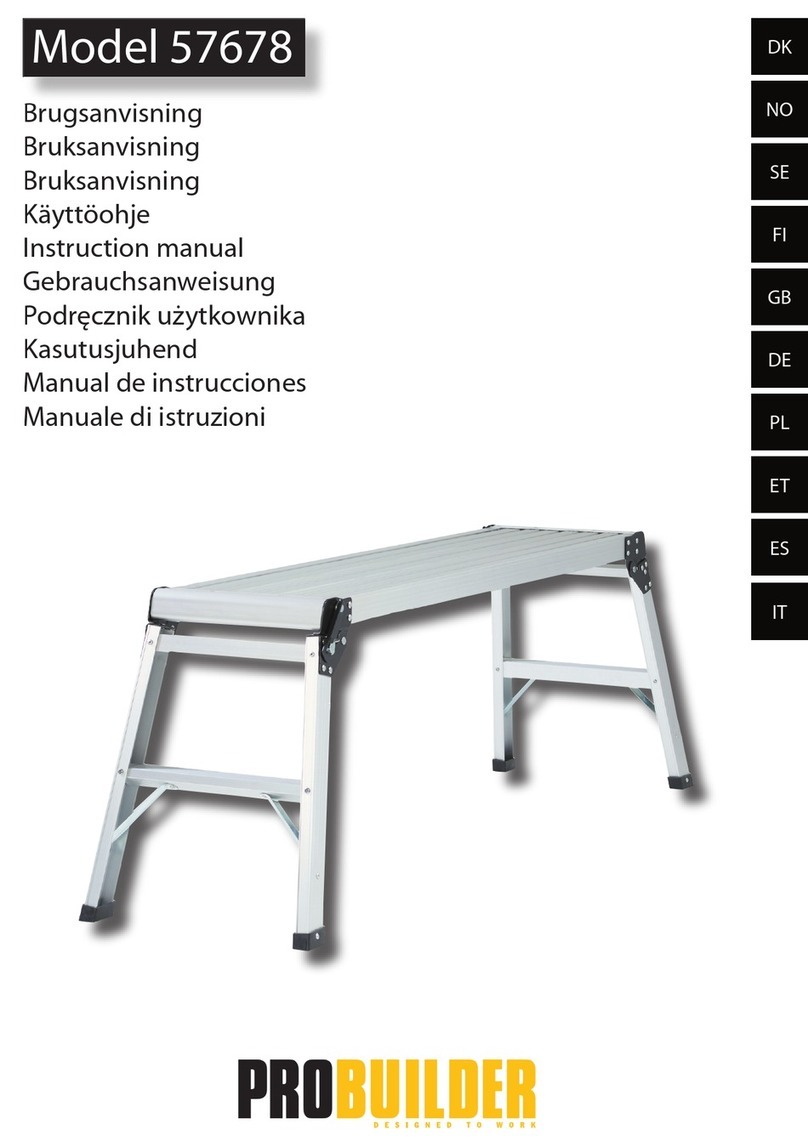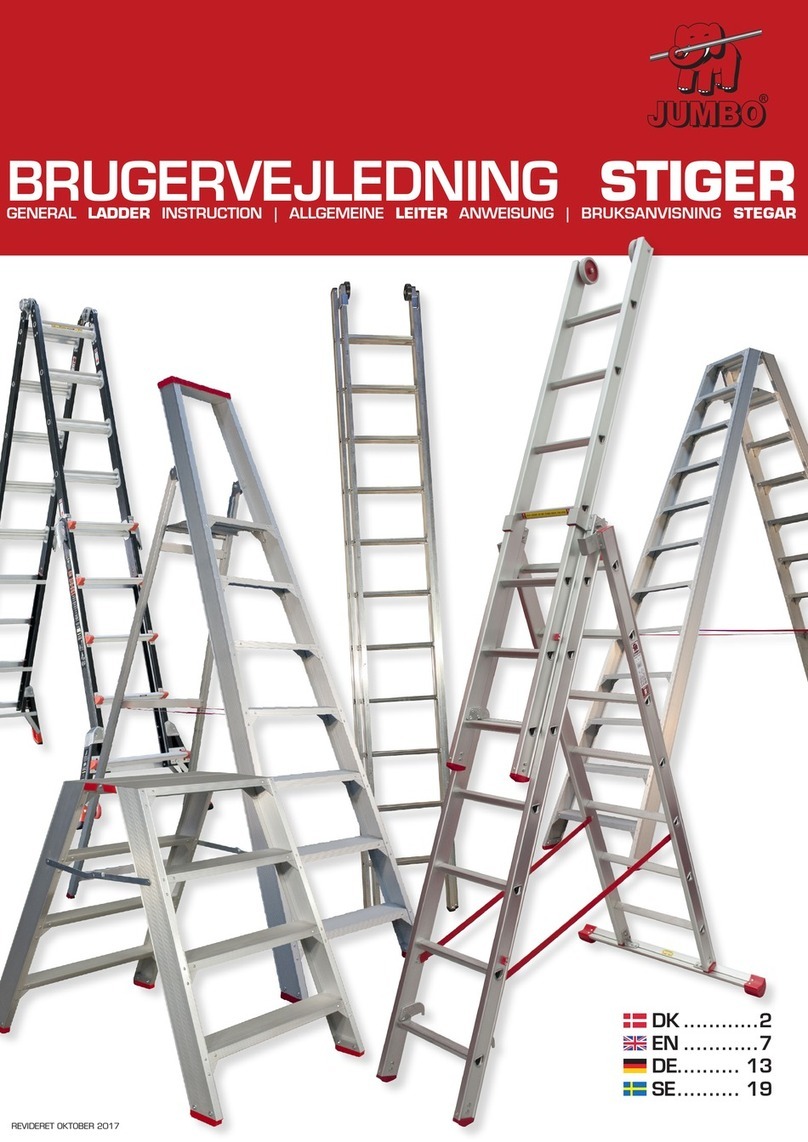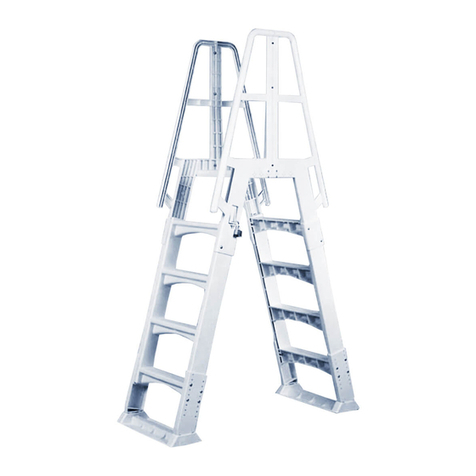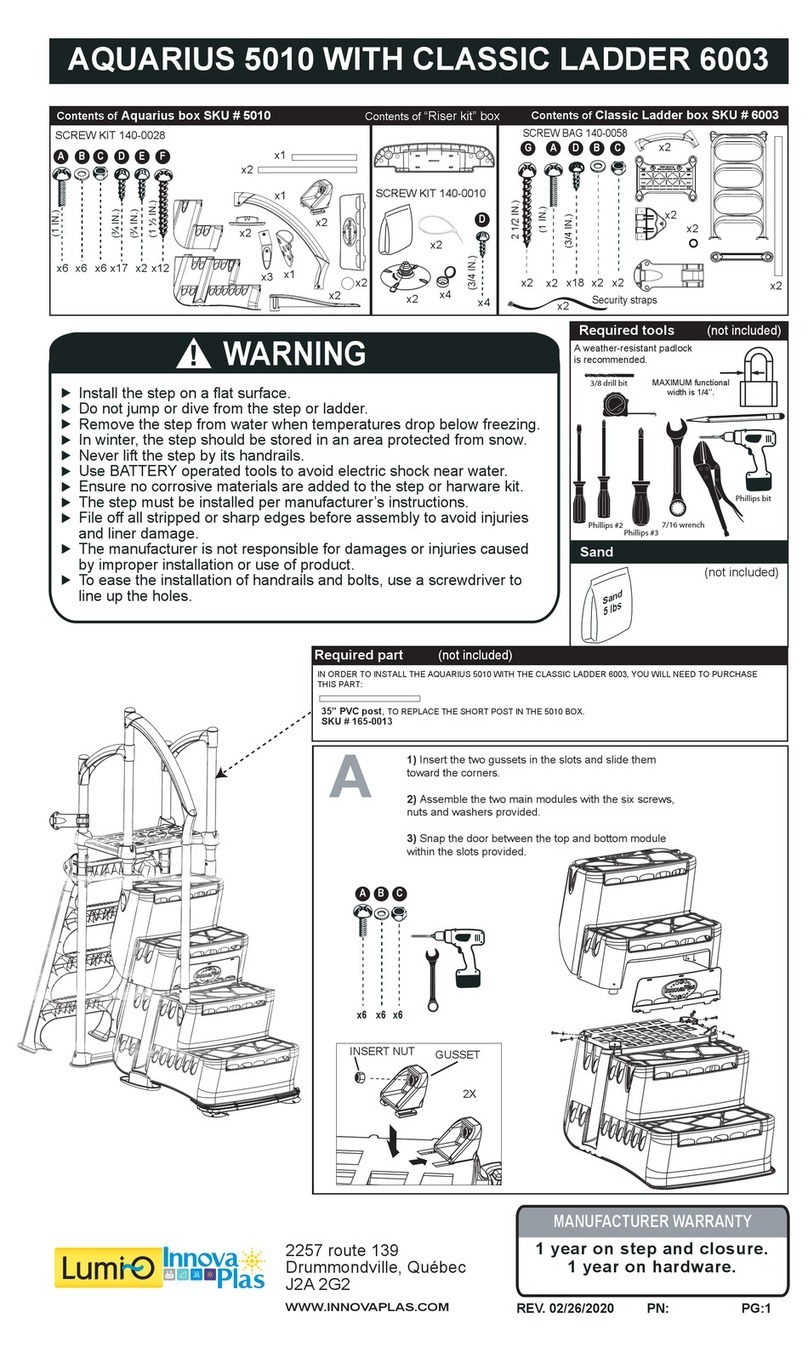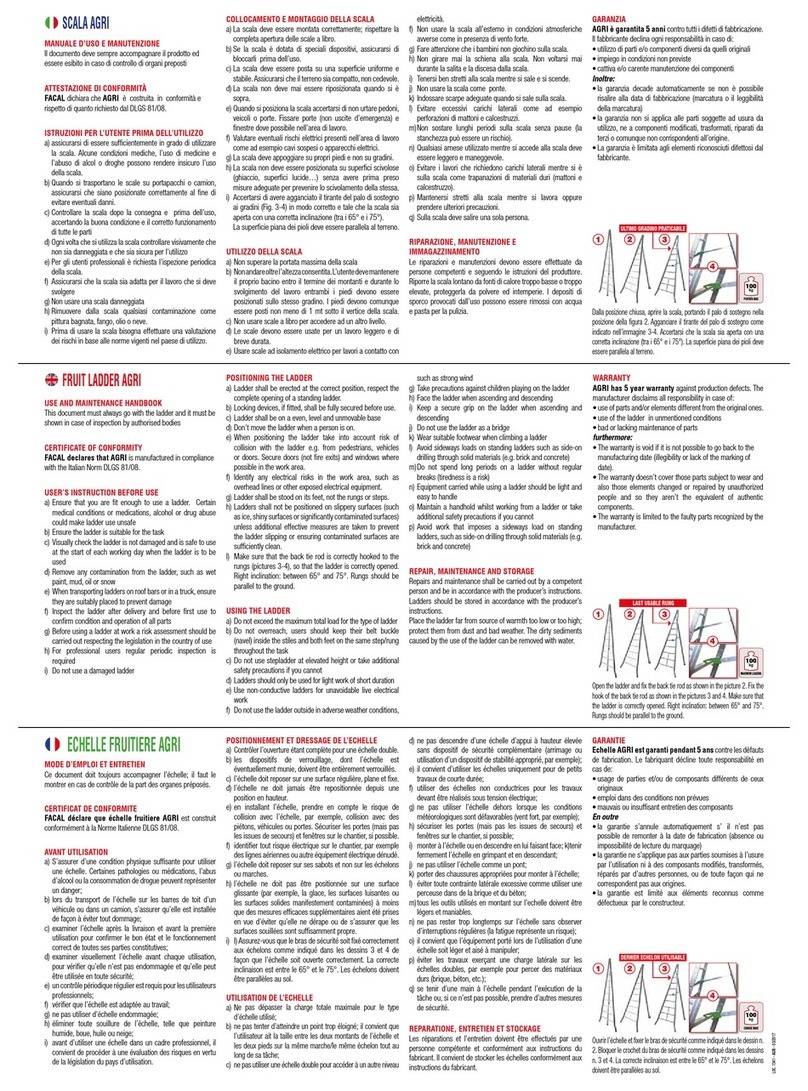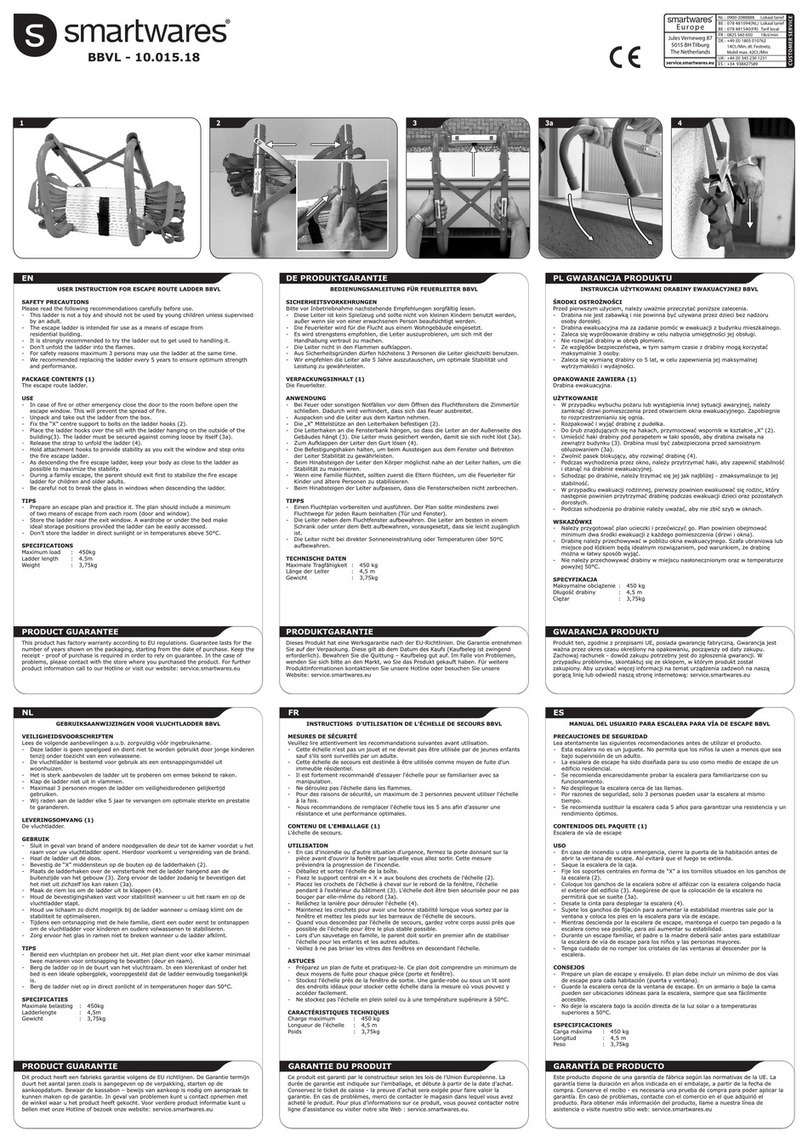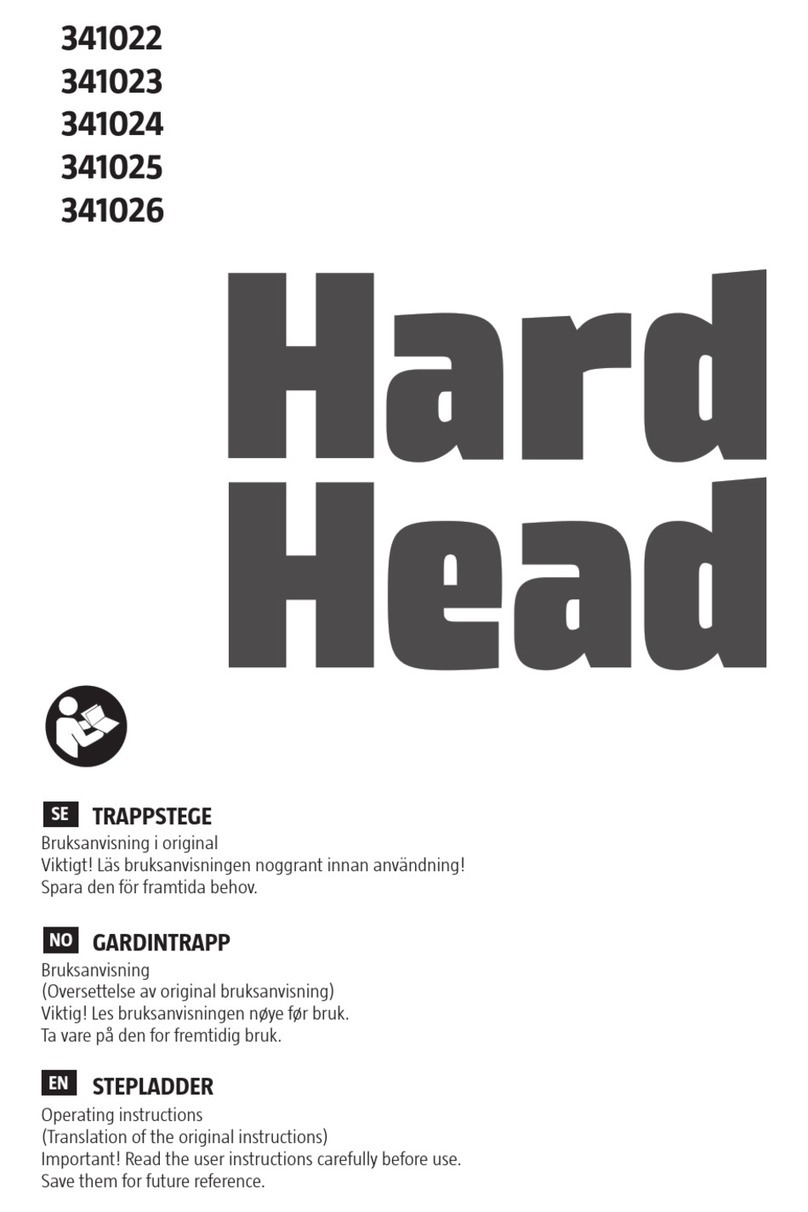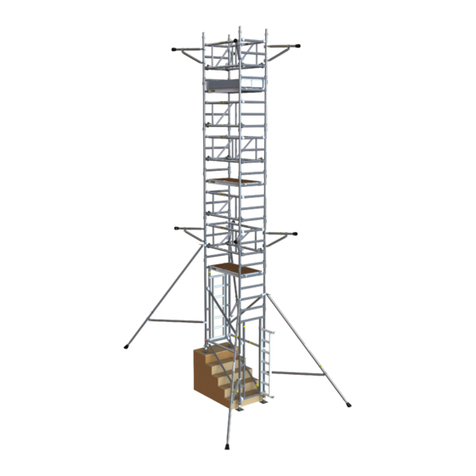
DO NOT:
DO NOT climb a ladder if you tire
easily, are subject to fainting
spells, using medicine, are under
the influence of drugs or alcohol,
or are physically impaired.
DO NOT hurry or skip steps.
Always take one step at a time,
firmly setting one foot before
moving the other.
DO NOT make temporary repairs
of damaged or missing parts.
DO NOT stand on the top three
rungs.
DO NOT overreach; if needed
move the ladder.
DO NOT climb the ladder with
your back to the ladder.
DO NOT attempt to move a ladder
while on it; get down and move
the ladder. Do not "walk" or "jog"
the ladder when standing on it.
DO NOT climb from one ladder to
another.
DO NOT use the ladder as a
plank or in the horizontal position.
DO NOT overload your ladder.
DO NOT leave an erect ladder
unattended.
Never release any of the ladder’s
locks or attempt to reposition the
ladder while working on the
ladder.
Never drop or apply an impact
load to the ladder.
Do not expose the ladder to
extreme heat or harsh chemicals.
DO:
Inspect the ladder before use, do not use
a broken ladder. If your ladder is broken,
remove it from service and destroy it.
Use the correct size of ladder for the job.
Read all instructions on the ladder
before using it. Get to know your ladder.
Securely engage rung locks before
climbing.
Use the proper 75.5-degree working
angle, the distance from the ladder’s
base to the base of the support wall
must be 1/4 the working length of the
ladder; i.e., 1 foot out from the wall for
every 4 feet in height. Use the level
bubbles installed on the ladder to check
the proper angle.
Keep the ladder clean and free from
debris. Wear slip-resistant shoes.
Keep the ladder close to your work:
avoid pushing or pulling on the ladder.
Climb up and down always facing the
ladder. Use both hands and maintain a
firm grip while climbing. Always keep at
least one hand securely holding the
ladder side-rail while working. Keep
three points of contact with the ladder.
Keep your body centered on the ladder
while climbing and working.
Haul tools up on a line rather than
carrying them.
Be aware of high winds; climb only in
emergency situations with the ladder
fully secured at the top and bottom to
prevent movement. Have another
person hold the base of the ladder.
Use extreme caution when getting on
and off the ladder.
Get help in carrying and setting up a
heavy ladder.
1 2 3 54
Erecting the Lunar Ladder
75.5°
75.5°
WALK-UP
HAND OVER HAND
ALWAYS CHECK
LOCKS:
SET UP AT
75.5° ANGLE
MOVE BACK 1/4TH THE DISTANCE
OF THE LADDER LENGTH TO THE
SUPPORT POINT.
ALWAYS BE SURE THE
LOCKS ARE FULLY
ENGAGED AND THE FLY IS
IN FRONT OF THE BASE
BEFORE CLIMBING.
PLACE FOOT ON BOTTOM
RUNG OR BASE SECTION.
ALWAYS CHECK SPIKE SHOES
Make sure both shoes are on firm
level and non-slippery surfaces.
Use spike plate on penetrable surfaces.
For proper use of spike shoe, position the
safety shoe with the rubber foot pad
toward user when climbing ladder.
BLOCK
BASE ON TOP
BLOCK
FOOT (WITH 2 PEOPLE)
©2013 Little Giant Ladder Systems 53610 v4 7.13
LOCKED!
FULLY
HOOKED
OVER BASE
SECTION
RUNG
Erecting the Lunar Ladder
1. Lay the ladder on the ground with the base
section facing up. Place the spike shoe of the
ladder against a wall to keep the ladder from
moving. (Figure 1).
2. Lift the other end of the ladder, and walk the
ladder hand over hand one rung at a time until
you are able to lean the ladder against the
wall. The inner or fly section should be facing
out. (Figures 1-3).
3. Lift the base of the ladder and carefully move
the base away from the wall until the ladder
leans at a 75.5-degree angle. Use the bubble
level to verify that you have set the ladder at a
75-degree angle. (Figures 3-5).
Extending the Lunar Ladder Using Rope and
Pulley System
1. Position yourself in front the ladder and lean
the ladder slightly away from the wall.
2. Pull the rope to extend the ladder to your
desired height.
3. When the ladder reaches the desired height,
make sure the rung locks are fully hooked
over the two rung sections. Check bubble
level and lean angle as needed.
4. To take down your ladder, reverse this
process. Working slowly will help you keep
control of the ladder.
CABLE HOOK SAFETY INSTRUCTIONS
1. Properly lock cable hooks into use position before
climbing.
2. Never lean ladder on hooks when using against a
building or other solid surface.
3. Never hang ladder from cable hooks. The cable
hooks are designed for use as a safety precaution, not
as a means of total support for the ladder.
4. Always tie off ladder to cable or pole to prevent sliding.
5. Read and follow all other instructions on the ladder.
USE POSITIONSTORED POSITION
56178 v2 3.11
56156 v3 10.11
THIS LADDER SECTION IS
NOT DESIGNED FOR
SEPARATE USE.
Do not stand on or
above this rung.
YOU CAN LOSE
YOUR BALANCE.
56155 v3 3.11
FIRM & SECURE
CONTACT
